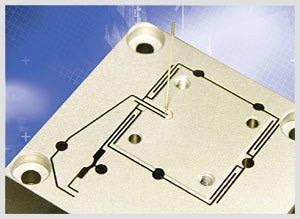|
PI Nanopositioning and scanning systems with frictionless flexure guidance are decidedly superior to positioners with conventional guiding systems (crossed roller bearings, etc.) in terms of resolution, reproducibility, straightness and flatness. Due to their inherent friction and limited guiding precision, traditional positioners are best used in applications requiring repeatability on the order of 0.1 µm, even though encoder readout may indicate much higher resolution. In contrast, PI piezo-driven flexure nanopositioners can easily achieve repeatability and minimum incremental motion in the subnanometer realm.
Piezo Drives Offer Higher Speed
With piezo drives, capable of accelerations of up to 10,000 g, and their low moved mass, such piezo stages can provide significantly higher scanning speeds than motorized systems.
Advantages of Using Flexures
Flexure motion is based on the elastic deformation (flexing) of a solid material. Friction and stiction are entirely eliminated, and flexures exhibit high stiffness, load capacity and resistance to shock and vibration. Flexures are maintenance free and not subject to wear. They are vacuum compatible, operate over a wide temperature range and require neither lubricants nor compressed air for operation.
Excellent Guiding Accuracy of Piezo Nanopositioners
The multilink flexure guiding systems employed in most PI piezo nanopositioners (Fig. 2) eliminate cosine errors and provide bidirectional flatness and straightness in the nanometer or microradian range. This high precision means that even the most demanding positioning tasks can be run bidirectionally for higher throughput.

Figure 1. Wire-EDM cutting process provides highest-accuracy flexure guiding systems in compact nanopositioning stages.
Lifetime / PICMA® Piezo Actuators
PI nanopositioning systems employ the award-winning PICMA® piezo actuators, the only actuators with cofired ceramic encapsulation. The PIMCA® piezo technology was specifically developed by PI’s piezoceramic division to provide higher performance and lifetime in nanopositioning applications.
Multilayer piezo actuators are similar to ceramic capacitors and are not affected by wear and tear. PI nanopositioning systems are designed to be driven at lower voltages than most other piezo systems (100 V vs. 150 V). The research literature, Physik Instrumente’s own test data and 30+ years of experience all confirm that lower average electric fields, lead to longer lifetime.
|